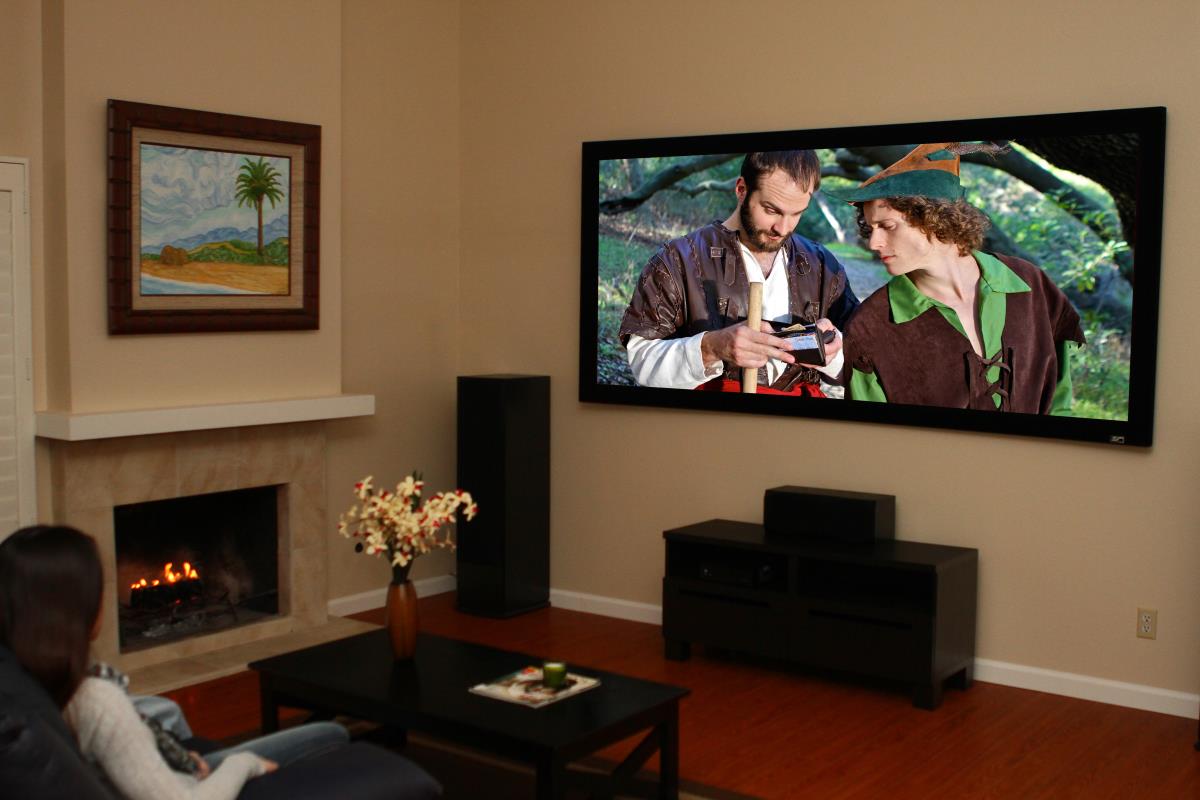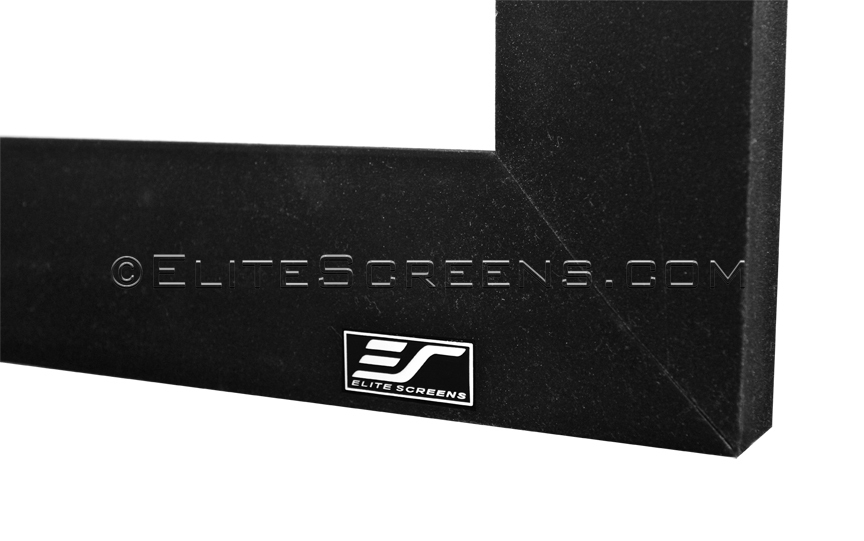 ELITE SCREENS Elite Screens Curve235-96w Lunette Series Projector Screen - 2.35:1 - 96in Diago
ELITE SCREENS Elite Screens Curve235-96w Lunette Series Projector Screen - 2.35:1 - 96in Diago
Pour une aide personnalisée ou une livraison plus rapide
+32 2 558 30 00
The Lunette Series is Elite's curved fixed frame screen. Curved screens design improves image depth and perception while increasing brightness uniformity.
- Curved Frame Home Theater Front Projection Screen
- Curvature enhances contrast levels with decreased incident light while creating a heightened sense of immersion
- 40’ fixed radial curvature also eliminates the pincushion effect Illustration
- Velvet covered 3.5"width aluminum frame border
- Sliding wall mounts provide adjustable horizontal centering
- 160° Viewing Angle for wide diffusion uniformity
- Adjustable fix plates provide equal tension over the entire projection surface
- Available in diagonal sizes 85" - 166" (2.35:1) and 84" - 150" (16:9)
- 1.1 gain CineWhite (matte white)
- 4K Ultra HD Ready (on CineWhite material)
- 2-year Premium Warranty
Lunette uses a 40’ curvature radius to accomplish three things; viewer immersion, picture enhancement and superior sound performance.
A curved screen reaches into the viewer’s peripheral vision creating the illusion that they are being drawn into the picture. This perceived reality is further reinforced by a curved screen’s ability to cover the center AND the right & left channel speakers. This is important because it joins the image with the sound from the three forward points of sound origin (Right, Center, & Left Channels) creating a sound stage effect that results in a more realistic association between sound and the picture. Lastly, a properly curved frame design eliminates a visual artifact known as “pincushion effect”. Pincushion effect happens when (on a 2.35:1 or other wide-angle screen) the distance to the right & left edges of the projected image are larger than the center resembling an hourglass laying on its side. This is caused by light expanding over the greater distance it travels. The further the distance, the larger the light “footprint”. On a cinemascope projection screen, light must travel a greater distance to the right/left edges than it does at the center. The distance actually causes the image to expand disproportionately on the sides creating a sideways “hourglass” image where the center of the picture is smaller than the right & left ends are. Since the right/left edges of the screen are curved forward on a “curved” screen, it allows the light to travel the same distance to any other point on the screen as it does to the center. This results in a “uniform” image that is free from distortion. With all the benefits that a curved frame projection screen has to offer, more and more dedicated home theater aficionados favor them.





















 Livraison GRATUITE.
Livraison GRATUITE.

